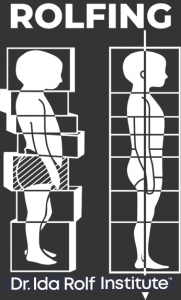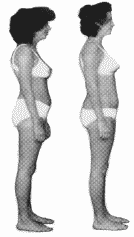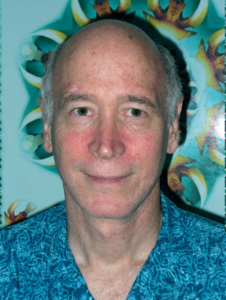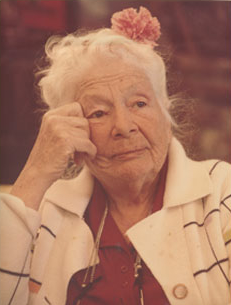THE TEN SERIES
Dr Rolf developed the basic ten-session series based on her unique understanding of how to organize (structurally integrate) the body at a higher level of order. This is not to say that we have to adhere to the series in every circumstance. We don’t, and there is real genius in the structure of it.
Each session in the ten-series has specific goals. They are basic enough that they can work for almost everyone. Ideally the sessions will be spaced from once a week to once a month apart. It is fine to space them out. The advantage of doing them closer together is getting the benefits sooner.
This is surprising to most people. Bodies keep changing from six months to a year after the completion of the series. I used to take before and after photos of clients in the series. Those were fun. I apologize, but 10 or 15 years of that got tiresome. So no photos but more expertise in the work. I think that is a good trade-off. What was even more fun than the initial set of photos were those taken if the client came back in for some advanced or fix-it work later. Those photos always showed more change, usually more change than in the series, in the direction we’d been nudging them. For more on this see the Science Section.
The first three sessions are a mini-series opening the outer sleeve of the body. The next three all address the pelvic attachments which closely effect almost everything from the head to the feet one way or another. The seventh session completes our first foray through the body preparing it for the last three integrating sessions. These sessions don’t have specific goals other than to prepare the person to go out into life with the pattern that can best be brought out in them at this time.
Sessions in the series can be done anytime from once a week to once a month or so apart.
Clients bodies will keep changing for six months to a year after the series is completed. Photos taken of clients before and after the series and then again months later show this progression. This gets into some esoteric biophysics so see that section if interested in the mechanisms involved in this. Discussion of the mechanisms involved can be found in the Science section.
Dr Rolf said that when the first session is done well that the rest of the series dictates itself. When I was in Rolfing school we looked at people who were getting the series and we were supposed to tell where in the process they were by seeing where they needed work. We did really well with that. Each session accomplishes something which then leaves a kind of issue that calls to be worked on next. See in goals below.
It can be modified. One way I do that is to be sure to address any major chronic issue the client has in each session even if the goal of that session doesn’t work in that area. We can make time for both.
I also like that it lets the client know at the onset that there will be an end to the initial process so that they can plan accordingly.
Fix-it work
I also do individualized sessions focusing on particular issues that the client wants help with. Tight quads or hamstrings in runners, restricted range of motion in shoulders, ankles that are unstable, etc.
The Session’s Goals
#1 The first goal of this session is to stretch and loosen the major torso layers to improve breathing and begin organizing the large muscles of the trunk, shoulders and neck. Next we would work on the large muscles of the hip and low back, then the hamstrings, and finish with more back and neck work.
#2 The body now calls for grounding so we go to the feet and lower legs. Human feet are unique in having arches. Dr Rolf emphasized the uniqueness our upright posture and the many demands it puts on all parts of our body, especially the feet. So we work from the knees to the toes with special emphasis on how the knees and ankles hinge in movement. Then we return to the back work, this time lengthening it so that when curling forward the space between the vertebrae opens. We can bend forward without that lengthening, but longer and more flexible is better. Then we do some more neck work.
#3 The first session tends to lengthen the front of the body and the second the back. This session we lengthen the two sides from the knees to the head connecting the work of the first two sessions to complete the first mini-series. If a client has concerns about whether the Rolfing seems to be accomplishing what they hope for this is the best place to review the situation. That’s because in the fourth session we begin opening the deep pelvic structures and there can be a lot in there.
#4 We begin this mini-series by going into the only part of the lower body we haven’t already touched into – the inside line of the legs, primarily the adductor muscles. These are very important in stabilizing the pelvis and the person’s gait. They are also very sensitive and require special care on the part of the Rolfer. Then we get into the hamstrings again as in the first session. What clients really like here is that it almost always feels easier than the first time around. We finish by balancing the new length below by feeding length down from the low back into the pelvis.
#5 This session completes the work begun in the last session by lengthening the superficial sheaths in the front of the body from the chest to the pubic bone, and then in the quads in the front of the thighs before opening the psoas muscles. Dr Rolf was the first somatic therapist to really appreciate how important the psoas muscles are. “The most important structural muscles in the body.” For decades Rolfers were the only ones dealing with them although they have since become very popular in other forms of bodywork. We hope that others understand that it really is a good idea to create space around them if one wants them to have room to lengthen. Then we do some deeper more integrating back and neck work.
#6 Completing this second mini-series we have clients lying face down which is unusual in the series so we can once again work on the calves, hamstrings and into the deep pelvic rotators underlying the larger glut muscles. Restrictions in these muscles dramatically impact the grace with which people walk. Then we work more on the sacroiliac and lumbar sheaths.
#7 We work on the upper pole of the spine, face and cranium. The face work given that we are working with the muscles of expression can be somewhat dramatic and intense. Here’s when people sometime wonder where did that crazy old lady come up with this! But it is just applying the same vision and principles as with the rest of the body. By the end of this session we have gone everywhere in the body that we will ever go.
#8-10 These are the integrating sessions. These are the most difficult to teach students. This is one important reason why additional continued educational training is required of Rolfers, so that we can go back after we’ve done hundreds of sessions and access more profound teachings.



